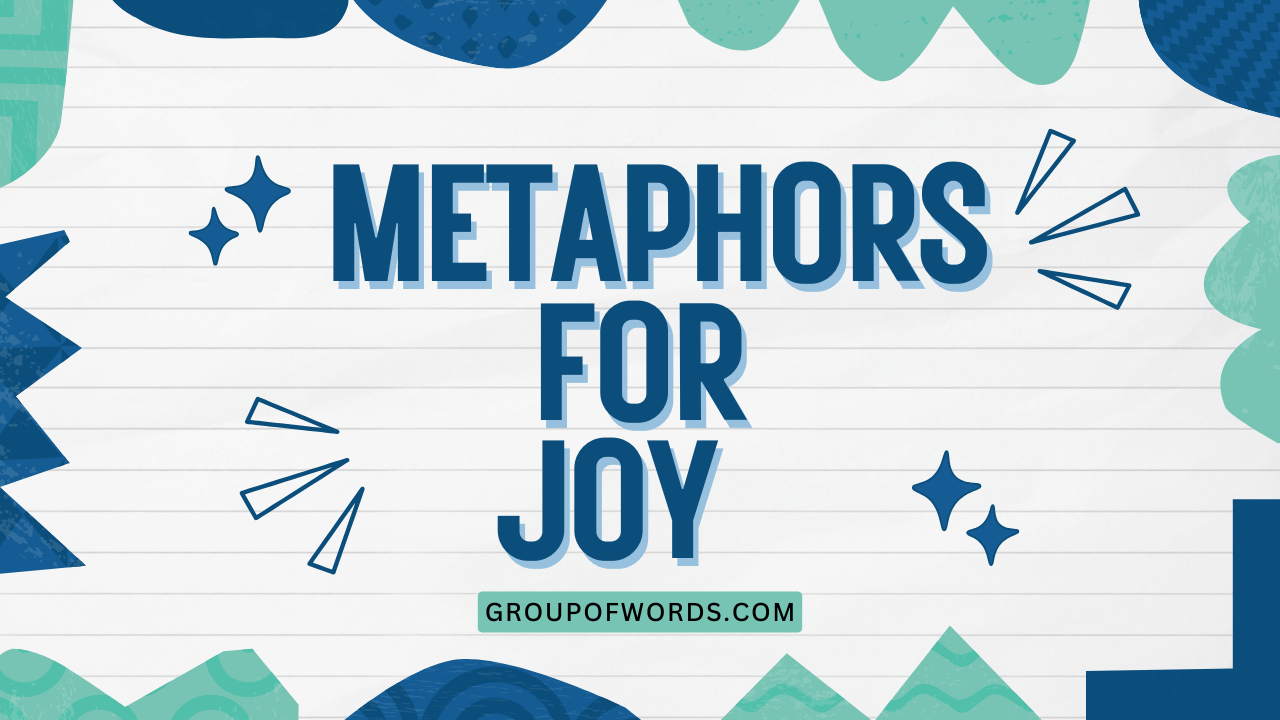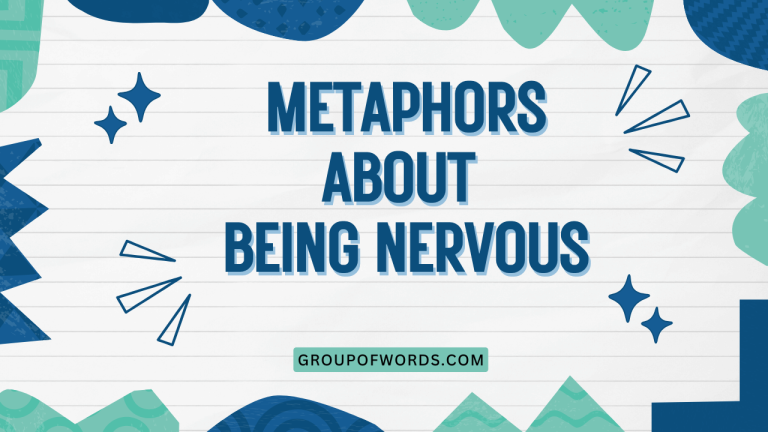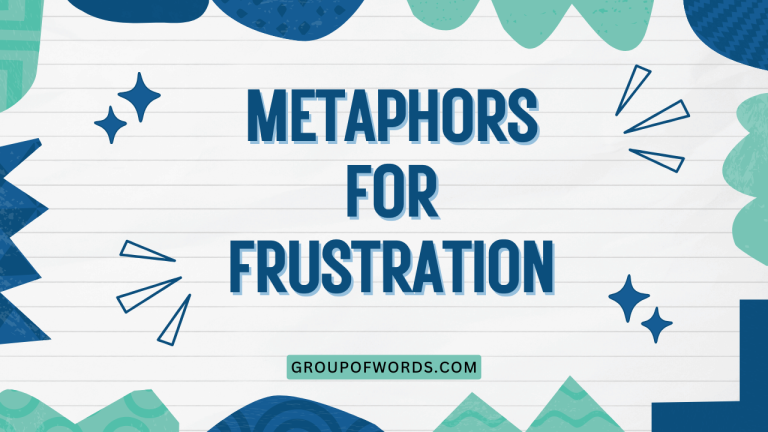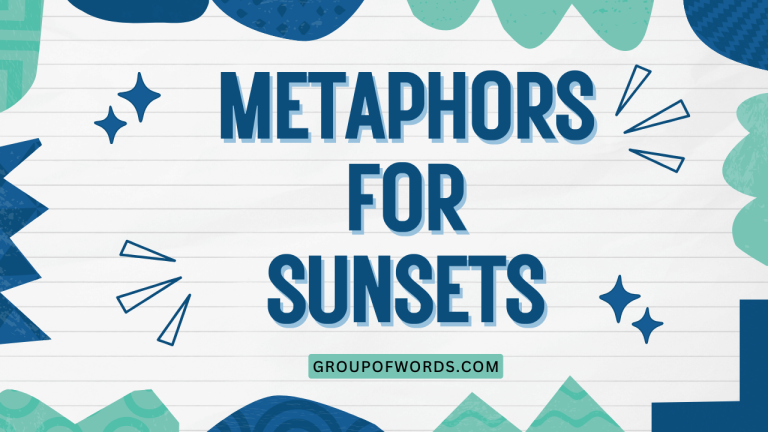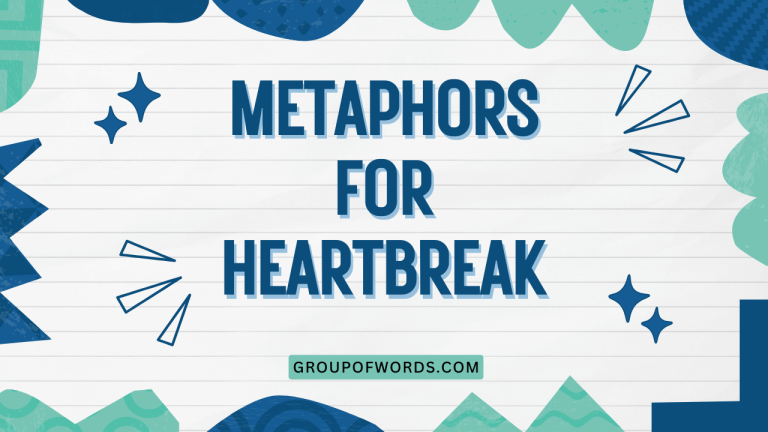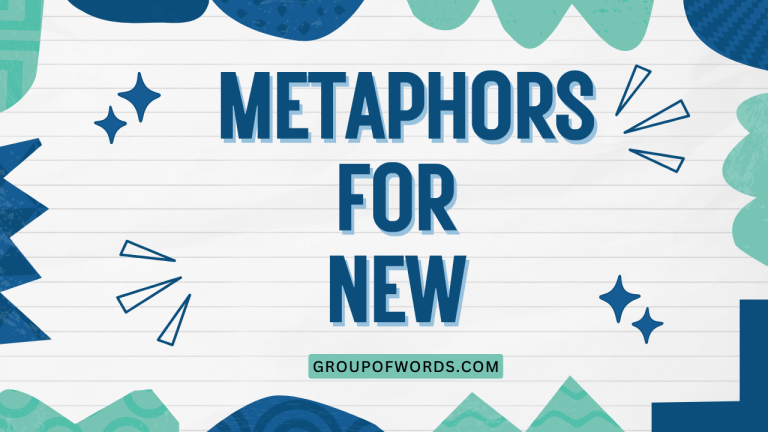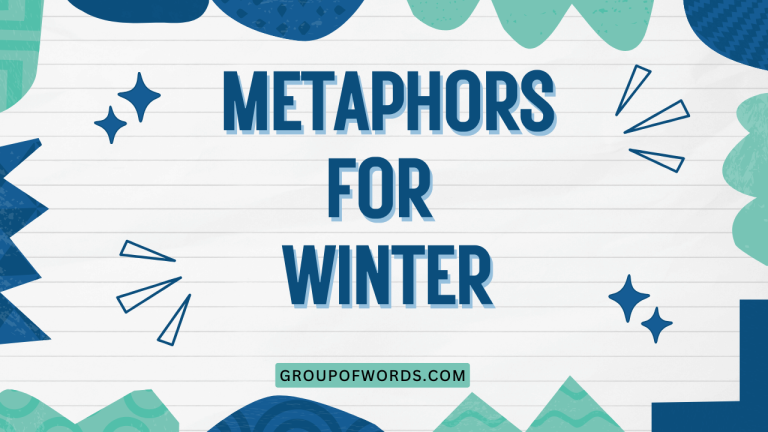Joyful Expressions: Mastering Metaphors for Happiness
Understanding how to express joy through metaphors enhances both your writing and comprehension skills. Metaphors allow us to convey complex emotions in vivid and relatable ways, making our language more engaging and impactful.
This article delves into the rich world of metaphors for joy, exploring their various forms, structures, and usage rules. Whether you’re an English language learner, a student, or simply someone looking to enrich their vocabulary, this guide will equip you with the knowledge and tools to master the art of expressing joy through metaphor.
This comprehensive guide will benefit anyone looking to understand and use metaphors for joy, from students learning English to writers seeking to add depth to their prose. By understanding these concepts, you can improve your ability to both understand and use English effectively.
Table of Contents
- Introduction
- Definition of Metaphor and Joy
- What is a Metaphor?
- Defining Joy
- Structural Breakdown of Joyful Metaphors
- Source Domain
- Target Domain
- Mapping Between Domains
- Types of Metaphors for Joy
- Light and Radiance Metaphors
- Elevation and Height Metaphors
- Warmth and Comfort Metaphors
- Fluidity and Overflow Metaphors
- Sweetness and Taste Metaphors
- Sound and Music Metaphors
- Examples of Metaphors for Joy
- Light and Radiance Examples
- Elevation and Height Examples
- Warmth and Comfort Examples
- Fluidity and Overflow Examples
- Sweetness and Taste Examples
- Sound and Music Examples
- Usage Rules for Metaphors of Joy
- Common Mistakes When Using Metaphors of Joy
- Practice Exercises
- Exercise 1: Identifying Metaphors
- Exercise 2: Creating Metaphors
- Exercise 3: Correcting Misused Metaphors
- Advanced Topics in Metaphorical Language
- Mixed Metaphors
- Extended Metaphors
- Dead Metaphors
- Frequently Asked Questions
- Conclusion
Definition of Metaphor and Joy
To understand metaphors for joy, we must first define both “metaphor” and “joy” separately. This will provide a solid foundation for exploring their intersection.
What is a Metaphor?
A metaphor is a figure of speech that directly compares two unlike things without using “like” or “as.” It asserts that one thing is another, creating a connection that reveals a hidden similarity or shared characteristic. Metaphors enrich language by adding layers of meaning and evoking vivid imagery. They are fundamental to both creative writing and everyday communication. For instance, saying “He is a lion in battle” doesn’t mean he literally is a lion, but that he possesses lion-like qualities such as courage and strength.
The power of a metaphor lies in its ability to transfer qualities from one concept to another, allowing us to understand abstract or complex ideas in more concrete terms. It allows us to see the world in new ways and express our thoughts and feelings with greater precision and impact.
Defining Joy
Joy is an intense feeling of happiness, pleasure, or delight. It’s a fundamental human emotion often associated with positive experiences, achievements, or connections.
Joy can manifest in various ways, from a quiet sense of contentment to an exuberant outburst of excitement. Understanding the multifaceted nature of joy is crucial for effectively capturing it through metaphorical language.
Joy is often described as an inner state of well-being and satisfaction. It can be triggered by various stimuli, including social interactions, personal accomplishments, and sensory experiences.
Because joy is an emotion, it can be difficult to describe directly. Metaphors offer a powerful tool for expressing the subjective and often ineffable nature of joy.
Structural Breakdown of Joyful Metaphors
Understanding the structure of metaphors helps us analyze how they work and how to create them effectively. Metaphors typically involve a source domain, a target domain, and a mapping between the two.
Source Domain
The source domain is the concrete or familiar concept used to describe the abstract or less familiar concept. In the context of metaphors for joy, the source domain might be something like light, warmth, or elevation – things we can easily visualize and understand.
For example, in the metaphor “Her smile was sunshine,” sunshine is the source domain.
Choosing an effective source domain is crucial for creating a powerful and relatable metaphor. The source domain should be something that resonates with the audience and evokes the desired emotions or associations.
Target Domain
The target domain is the abstract or complex concept being described, which in this case is joy. Joy itself is an emotion, and therefore abstract.
We use the source domain to make it more tangible and understandable. In the example “Her smile was sunshine,” the target domain is the joy expressed through her smile.
The target domain is often an emotion, idea, or experience that is difficult to articulate directly. Metaphors provide a way to bypass this difficulty by associating the target domain with something more concrete.
Mapping Between Domains
Mapping refers to the connection or correspondence between specific aspects of the source and target domains. It’s the underlying logic that makes the metaphor meaningful.
For example, in “Her smile was sunshine,” the mapping might involve the warmth, brightness, and positive feelings associated with sunshine being transferred to the smile and the joy it represents.
Effective mapping is essential for a successful metaphor. The connection between the source and target domains should be clear and logical, allowing the audience to understand the intended meaning and appreciate the metaphorical relationship.
Types of Metaphors for Joy
Metaphors for joy can be categorized based on the types of imagery and concepts they draw upon. Here are some common categories:
Light and Radiance Metaphors
These metaphors associate joy with brightness, illumination, and radiance. They often use words like “sunshine,” “light,” “sparkle,” and “glow” to convey the feeling of happiness.
Light metaphors suggest that joy is something that brightens our lives and makes things clearer.
Light metaphors are particularly effective because they tap into our innate association of light with positivity and well-being. They can evoke a sense of hope, clarity, and optimism.
Elevation and Height Metaphors
These metaphors connect joy with feelings of being lifted up, soaring, or reaching new heights. They often use words like “high,” “elevated,” “soaring,” and “on top of the world.” Elevation metaphors suggest that joy is an uplifting experience that transcends the ordinary.
Elevation metaphors resonate with our physical experience of feeling lighter and more energetic when we are happy. They can convey a sense of freedom, accomplishment, and exhilaration.
Warmth and Comfort Metaphors
These metaphors associate joy with feelings of warmth, comfort, and security. They often use words like “warm,” “cozy,” “embracing,” and “heartwarming.” Warmth metaphors suggest that joy is a comforting and nurturing emotion that provides a sense of well-being.
Warmth metaphors tap into our primal association of warmth with safety and security. They can evoke feelings of love, contentment, and connection.
Fluidity and Overflow Metaphors
These metaphors link joy with the idea of flowing, overflowing, or bubbling up. They often use words like “flowing,” “overflowing,” “bubbling,” and “waves.” Fluidity metaphors suggest that joy is an abundant and unstoppable force that cannot be contained.
Fluidity metaphors resonate with our experience of joy as a dynamic and energetic emotion. They can convey a sense of abundance, freedom, and spontaneity.
Sweetness and Taste Metaphors
These metaphors connect joy with pleasant tastes and sweetness. They often use words like “sweet,” “delicious,” “sugary,” and “treat.” Sweetness metaphors suggest that joy is a delightful and pleasurable experience that satisfies our emotional cravings.
Sweetness metaphors tap into our innate preference for sweet tastes, which are often associated with reward and pleasure. They can evoke feelings of delight, indulgence, and satisfaction.
Sound and Music Metaphors
These metaphors associate joy with harmonious sounds and music. They often use words like “melody,” “harmony,” “laughter,” and “song.” Sound metaphors suggest that joy is a harmonious and uplifting experience that resonates within us.
Sound metaphors resonate with our experience of music as a source of pleasure and emotional expression. They can convey a sense of harmony, rhythm, and emotional resonance.
Examples of Metaphors for Joy
Here are several examples of metaphors for joy, categorized by type. Each example illustrates how different source domains can be used to express the feeling of joy.
Light and Radiance Examples
The following table illustrates how light and radiance can be used metaphorically to describe joy. Each example highlights the brightness and clarity associated with happiness.
| Metaphor | Explanation |
|---|---|
| Her smile was sunshine on a cloudy day. | The smile brightened a gloomy situation. |
| His laughter was a beacon of light in the darkness. | His laughter provided hope and joy in a difficult time. |
| Joy sparkled in her eyes. | Her eyes reflected her happiness. |
| The room was filled with the light of their happiness. | Their happiness illuminated the atmosphere. |
| Her heart glowed with joy. | She felt a warm, radiant happiness inside. |
| His success shone brightly on his face. | His happiness was evident in his expression. |
| The news was a ray of sunshine in their lives. | The news brought happiness into their lives. |
| Her presence illuminated the room with joy. | Her presence filled the room with happiness. |
| The children’s laughter was like a thousand tiny suns. | Their laughter was intensely bright and joyful. |
| His face lit up with pure joy. | His face became bright with happiness. |
| The celebration was a festival of light and joy. | The celebration was filled with brightness and happiness. |
| Her happiness was a guiding light for others. | Her happiness inspired and guided those around her. |
| The award ceremony was a spotlight on their joy. | The award ceremony highlighted their happiness. |
| His eyes twinkled with amusement and joy. | His eyes sparkled with happiness and amusement. |
| Their love was a radiant flame of joy. | Their love was a bright and passionate source of happiness. |
| The concert was a dazzling display of musical joy. | The concert was a brilliant and joyful musical experience. |
| Her spirit shone like a star, filled with joy. | Her spirit was bright and radiant with happiness. |
| The festival was a kaleidoscope of light and joyful colors. | The festival was a vibrant and colorful celebration of happiness. |
| His words were like sunshine, warming their hearts with joy. | His words brought warmth and happiness to their hearts. |
| Her laughter was a spark that ignited joy in everyone around her. | Her laughter spread happiness to everyone nearby. |
| Their reunion was a beacon of hope and joy for the community. | Their reunion brought hope and happiness to the community. |
| The painting was a luminous expression of pure joy. | The painting radiated pure happiness. |
| His success was a shining example of perseverance and joy. | His success exemplified the rewards of hard work and happiness. |
| The wedding was a radiant celebration of their love and joy. | The wedding was a bright and joyful celebration of their love. |
| Her smile was a sunrise, bringing warmth and joy to his day. | Her smile brought warmth and happiness to his day. |
Elevation and Height Examples
This table presents metaphors that use elevation and height to express joy. These examples emphasize the uplifting and transcendent nature of happiness.
| Metaphor | Explanation |
|---|---|
| She was on top of the world after winning the award. | She felt incredibly happy and successful. |
| His spirits soared when he heard the good news. | He felt uplifted and joyful after receiving the news. |
| Her heart leaped with joy. | She felt a sudden burst of happiness. |
| They were floating on cloud nine after their wedding. | They felt extremely happy and blissful after their wedding. |
| His joy reached new heights when his child was born. | He felt an unprecedented level of happiness. |
| She felt elevated by the praise she received. | She felt uplifted and valued by the praise. |
| The success lifted her spirits. | The success made her feel happier. |
| His happiness knew no bounds. | His happiness was limitless and unbounded. |
| She felt like she was walking on air. | She felt light and joyful, as if floating. |
| His joy was sky-high after the victory. | His joy was extremely high after the victory. |
| Their spirits ascended with each note of the music. | Their happiness increased with each note of the music. |
| She felt like she was floating above the clouds with joy. | She felt an overwhelming sense of happiness. |
| His career success catapulted him to new heights of joy. | His career success brought him great happiness. |
| The children’s laughter lifted the entire room. | The children’s laughter filled the room with joy. |
| Their love story soared to the heavens, filled with joy. | Their love story was exceptionally happy and fulfilling. |
| The graduation ceremony elevated their sense of accomplishment and joy. | The graduation ceremony made them feel proud and happy. |
| Her success was a towering achievement, filled with joy. | Her success was a significant source of happiness. |
| They reached the pinnacle of joy on their wedding day. | They experienced the highest level of happiness on their wedding day. |
| His heart took flight with joy upon seeing his family. | His heart was filled with joy when he saw his family. |
| Her dreams soared to new heights, filled with joy and hope. | Her dreams were ambitious and fueled by happiness and hope. |
| The promotion lifted his career to new heights of joy and fulfillment. | The promotion brought him greater happiness and satisfaction in his career. |
| Her art transcended expectations, elevating her to new levels of joy. | Her art surpassed expectations, bringing her great happiness. |
| Their teamwork elevated the project to unprecedented heights of success and joy. | Their teamwork made the project incredibly successful and fulfilling. |
| The community celebration elevated everyone’s spirits, filling them with joy. | The community celebration made everyone feel happier and more joyful. |
| His music resonated deeply, lifting listeners to a higher plane of joy. | His music deeply touched people, filling them with profound joy. |
Warmth and Comfort Examples
The subsequent table showcases metaphors that use warmth and comfort to depict joy. These examples underscore the comforting and secure feeling of happiness.
| Metaphor | Explanation |
|---|---|
| His words were a warm embrace. | His words were comforting and supportive. |
| Her laughter was like a cozy fire on a cold night. | Her laughter brought warmth and comfort. |
| Joy warmed her heart. | She felt a deep, comforting happiness. |
| Their love was a comforting blanket on a chilly evening. | Their love provided warmth and security. |
| His presence was a source of warmth and joy. | His presence brought comfort and happiness. |
| She felt enveloped in the warmth of their friendship. | She felt comforted and supported by their friendship. |
| Their reunion was a heartwarming experience. | Their reunion was emotionally comforting and joyful. |
| His kind words were like a warm cup of tea. | His kind words were comforting and soothing. |
| Her smile was a ray of warmth in the cold winter. | Her smile brought comfort and happiness during a difficult time. |
| The memories of their childhood were a warm blanket of joy. | The memories of their childhood brought comfort and happiness. |
| Their home was filled with the warmth of love and joy. | Their home was filled with comforting love and happiness. |
| His hug was a warm haven of comfort and joy. | His hug provided a comforting and joyful refuge. |
| The community’s support was a warm embrace during their time of need. | The community’s support provided comfort and happiness during a difficult time. |
| Her kindness was a warm fire, spreading joy to everyone around her. | Her kindness brought comfort and happiness to everyone nearby. |
| Their family’s love was a warm shelter from the storm of life. | Their family’s love provided a comforting refuge from life’s challenges. |
| The holiday season was a warm tapestry of joy and togetherness. | The holiday season was a comforting and joyful time of unity. |
| His gentle words were a warm balm on her wounded spirit, filling her with joy. | His gentle words provided comfort and happiness to her troubled spirit. |
| Their shared laughter was a warm fireplace, creating a cozy atmosphere of joy. | Their shared laughter created a comforting and joyful environment. |
| Her friendship was a warm haven, providing comfort and joy during difficult times. | Her friendship provided a comforting and joyful refuge during challenging times. |
| The evening was a warm blanket of stars, filling their hearts with joy. | The evening was a comforting and joyful experience under the starlit sky. |
| His music was a warm embrace, comforting and filling hearts with joy. | His music provided comfort and happiness to those who listened. |
| Their love story was a warm fire, burning brightly with joy and passion. | Their love story was a comforting and joyful source of passion. |
| Her presence was a warm ray of sunshine, bringing joy to even the darkest days. | Her presence brought comfort and happiness even during the most difficult times. |
| The old photograph was a warm window, allowing them to relive joyful memories. | The old photograph provided a comforting way to remember joyful moments. |
| Their partnership was a warm foundation, built on trust and shared joy. | Their partnership provided a comforting and joyful base for their success. |
Fluidity and Overflow Examples
The following table includes metaphors that use fluidity and overflow to depict joy. These examples illustrate the abundant and unstoppable nature of happiness.
| Metaphor | Explanation |
|---|---|
| Joy flowed through her veins. | She felt an intense, pervasive happiness. |
| His heart overflowed with joy. | He felt an abundance of happiness. |
| Laughter bubbled up from deep inside her. | She felt a spontaneous and effervescent happiness. |
| Waves of joy washed over them. | They experienced a powerful and overwhelming happiness. |
| His happiness streamed from him like a river. | His happiness was evident and abundant. |
| She was awash in a sea of joy. | She was completely surrounded by happiness. |
| Their spirits flowed together in a river of joy. | They shared a deep and flowing sense of happiness. |
| His joy cascaded over everyone in the room. | His joy spread to everyone around him. |
| Her heart was a fountain of joy, always overflowing. | Her heart was a constant source of abundant happiness. |
| Their laughter was like a bubbling brook, endlessly flowing with joy. | Their laughter was constant and filled with joy. |
| His creativity flowed like a river, bringing joy to countless people. | His creativity brought happiness to many people. |
| Her enthusiasm was a tidal wave of joy, sweeping everyone along with her. | Her enthusiasm spread happiness to everyone around her. |
| Their happiness spilled over, filling the entire room with joy. | Their happiness spread throughout the room. |
| His words flowed like a gentle stream, bringing joy and comfort to the listeners. | His words brought happiness and comfort to those who listened. |
| Her energy was a fountain of youth, constantly bubbling with joy and vitality. | Her energy was a constant source of happiness and vitality. |
| Their team’s success was a flood of joy, washing away years of hard work and sacrifice. | Their team’s success brought immense happiness after years of effort. |
| His presence was a wave of positivity, bringing joy and optimism wherever he went. | His presence brought happiness and optimism to every place he visited. |
| Her passion for music was a river of inspiration, flowing with joy and creativity. | Her passion for music was a constant source of happiness and creativity. |
| Their love story was a bubbling spring, constantly renewing itself with joy and affection. | Their love story was a constant source of happiness and affection. |
| His generosity was like an endless stream, constantly flowing with joy and compassion. | His generosity was a constant source of happiness and compassion. |
| Their community spirit was a tidal wave, sweeping away negativity and bringing joy to all. | Their community spirit eliminated negativity and brought happiness to everyone. |
| Her artistic talent was a wellspring of creativity, constantly overflowing with joy and expression. | Her artistic talent was a constant source of happiness and creative expression. |
| Their shared laughter was like a waterfall, cascading down with joy and infectious mirth. | Their shared laughter was an abundant and contagious source of happiness. |
| His dedication to his craft was a river of passion, constantly flowing with joy and determination. | His dedication was a constant source of happiness and determination. |
| Their collaborative efforts were a flood of innovation, bringing joy and progress to the industry. | Their collaboration brought happiness and advancement to their field. |
Sweetness and Taste Examples
This table contains metaphors that use sweetness and taste to depict joy. These examples highlight the delightful and pleasurable nature of happiness.
| Metaphor | Explanation |
|---|---|
| Her success was the sweetest victory. | Her success was incredibly satisfying and joyful. |
| Their love was like a delicious treat. | Their love was pleasurable and enjoyable. |
| Joy tasted like honey on her tongue. | She felt a sweet, satisfying happiness. |
| His laughter was like a sugary melody. | His laughter was pleasant and delightful. |
| She savored every moment of joy. | She enjoyed every moment of happiness to the fullest. |
| The reunion was a sweet and unforgettable experience. | The reunion was a delightful and memorable experience. |
| Their friendship was a sweet bond that lasted a lifetime. | Their friendship was a delightful connection that endured. |
| His words were like sweet nectar to her ears. | His words were pleasing and delightful to her. |
| Her kindness was a sweet gesture that warmed his heart. | Her kindness was a delightful act that made him happy. |
| The memories of their vacation were a sweet escape from reality. | The memories of their vacation were a delightful reprieve from everyday life. |
| Their reunion was a sweet symphony of joy and laughter. | Their reunion was a delightful and harmonious experience. |
| His gratitude was a sweet song that echoed in his heart. | His gratitude was a delightful feeling that resonated within him. |
| Their shared moments were sweet treasures that they cherished forever. | Their shared moments were delightful memories they valued greatly. |
| Her encouragement was a sweet balm that soothed his weary soul. | Her encouragement was a delightful comfort that healed his spirit. |
| Their collaborative success was a sweet fruit of their combined efforts. | Their collaborative success was a delightful result of their teamwork. |
| His artistic creation was a sweet masterpiece that pleased the senses. | His artistic creation was a delightful work of art that satisfied the senses. |
| Their shared laughter was like a sweet melody that filled the air with joy. | Their shared laughter created a delightful and joyful atmosphere. |
| Her heartfelt words were like sweet honey, nourishing their spirits and filling them with joy. | Her heartfelt words provided comfort and happiness to their spirits. |
| Their reunion was a sweet reunion cake, baked with years of longing and affection. | Their reunion was a delightful and heartfelt experience after years apart. |
| His act of kindness was a sweet treat, bringing joy and happiness to a stranger’s day. | His act of kindness brought delight and happiness to someone’s day. |
| Their love story was a sweet romance novel, filled with tender moments and joyful encounters. | Their love story was a delightful and heartwarming narrative. |
| Her success in overcoming adversity was a sweet triumph, inspiring others to persevere. | Her success was a delightful victory, encouraging others to keep going. |
| Their shared journey was a sweet adventure, filled with memorable experiences and joyful discoveries. | Their shared journey was a delightful and unforgettable experience. |
| His heartfelt apology was a sweet gesture of reconciliation, mending broken ties and restoring joy. | His apology was a delightful act of forgiveness, repairing relationships and bringing happiness. |
| Their collaborative project was a sweet creation, blending diverse talents and yielding joyful results. | Their collaboration was a delightful achievement, combining different skills and producing happy outcomes. |
Sound and Music Examples
The following table presents metaphors that use sound and music to depict joy. These examples underscore the harmonious and uplifting nature of happiness.
| Metaphor | Explanation |
|---|---|
| Her laughter was music to his ears. | Her laughter was delightful and pleasing to him. |
| Their joy resonated like a harmonious chord. | Their joy was in perfect agreement and harmony. |
| His success was a symphony of hard work and dedication. | His success was a harmonious result of his efforts. |
| The celebration was a joyful chorus of voices. | The celebration was filled with happy, unified voices. |
| Their love story was a beautiful melody. | Their love story was harmonious and pleasing. |
| His words were a soothing rhythm that calmed her nerves. | His words were comforting and reassuring. |
| The children’s laughter was a delightful tune that filled the air. | The children’s laughter created a joyful atmosphere. |
| His encouragement was a uplifting harmony that boosted her confidence. | His encouragement was inspiring and confidence-building. |
| Their shared moments were a sweet serenade that echoed in their hearts. | Their shared moments were delightful and memorable. |
| Her kind gestures were a gentle composition that touched many lives. | Her kind gestures had a profound and positive impact on others. |
| Their gratitude was a melodious expression that resonated with appreciation. | Their gratitude was a harmonious and heartfelt expression. |
| His creative vision was a symphony of ideas that inspired many. | His creativity was a harmonious blend of ideas that inspired others. |
| Their collaborative efforts were a rhythmic dance that yielded harmonious results. | Their collaboration was a coordinated effort that produced positive outcomes. |
| Her inspiring words were a powerful anthem that motivated the team. | Her words were a strong and motivating message for the team. |
| Their shared laughter was a cheerful jingle that brightened everyone’s day. | Their laughter was a delightful sound that made everyone happier. |
| His heartfelt advice was a comforting refrain that guided her through tough times. | His advice was a reassuring message that helped her during difficult times. |
| Their community’s unity was a harmonious ensemble that created a strong bond. | Their community’s unity was a strong and unified force. |
| Her positive attitude was a vibrant melody that uplifted everyone’s spirits. | Her positive attitude improved the mood of everyone around her. |
| Their success story was a triumphant crescendo that inspired generations. | Their success was a powerful and inspiring achievement. |
| His compassionate actions were a soothing lullaby that comforted those in need. | His compassionate actions provided comfort to those who were suffering. |
| Their shared memories were a nostalgic tune that evoked joyful reminiscences. | Their shared memories brought back happy and nostalgic feelings. |
| Her resilience in overcoming challenges was a resounding chord of strength and determination. | Her resilience demonstrated strength and determination. |
| Their partnership was a harmonious duet, blending their strengths to achieve common goals. | Their partnership was a harmonious collaboration that achieved shared success. |
| His inspiring speech was a powerful oratorio, resonating with hope and joyful aspirations. | His speech was impactful and filled with hope. |
| Their collective achievements were a grand opera, showcasing talent, dedication, and joyful success. | Their accomplishments showed talent and dedication. |
Usage Rules for Metaphors of Joy
To effectively use metaphors for joy, consider these guidelines:
- Clarity: Ensure the metaphor is easily understandable. The connection between the source and target domains should be clear.
- Relevance: Choose metaphors that are relevant to the context and audience. Consider their background and experiences.
- Originality: Strive for originality to make your writing more engaging. Avoid clichés and overused metaphors.
- Consistency: Maintain consistency in your metaphorical language. Avoid mixing metaphors that clash with each other.
- Appropriateness: Use metaphors that are appropriate for the tone and style of your writing. Avoid overly sentimental or exaggerated metaphors.
By following these rules, you can create metaphors that are both effective and impactful, enhancing your ability to express joy in a meaningful way.
Common Mistakes When Using Metaphors of Joy
Even with a good understanding of metaphors, it’s easy to make mistakes. Here are some common pitfalls to avoid:
- Clichés: Using overused metaphors that have lost their impact (e.g., “happy as a clam”).
- Mixed Metaphors: Combining metaphors that create illogical or absurd images (e.g., “He nipped that project in the bud to get the ball rolling.”).
- Overly Complex Metaphors: Creating metaphors that are too complicated or obscure for the audience to understand.
- Inconsistent Tone: Using metaphors that don’t match the overall tone or style of the writing.
- Lack of Connection: Failing to establish a clear and logical connection between the source and target domains.
Being aware of these mistakes can help you refine your use of metaphors and create more effective and engaging expressions of joy.
Practice Exercises
To solidify your understanding of metaphors for joy, try these exercises:
Exercise 1: Identifying Metaphors
Identify the metaphors in the following sentences and explain what they mean:
- Her laughter was a sparkling stream of delight.
- His heart was a warm fireplace, filled with joy.
- Their success soared to the heavens.
Answers:
- Metaphor: “Her laughter was a sparkling stream of delight.” Explanation: Her laughter was joyful, continuous, and refreshing.
- Metaphor: “His heart was a warm fireplace, filled with joy.” Explanation: His heart was a source of comfort and happiness.
- Metaphor: “Their success soared to the heavens.” Explanation: Their success was extremely high and significant.
Exercise 2: Creating Metaphors
Create your own metaphors for joy using the following source domains:
- Sunshine
- Music
- Sweetness
Sample Answers:
- Her smile was like sunshine, warming my soul.
- Their laughter was a beautiful symphony, filling the room with joy.
- The moment was as sweet as honey, a pure taste of joy.
Exercise 3: Correcting Misused Metaphors
Correct the following sentences to improve the use of metaphors for joy:
- His joy was a brick. His joy was a brick. His joy was a soaring eagle.
- She was happy as a clam. She was happy as a clam. She was floating on cloud nine.
- Their love was a rolling stone. Their love was a rolling stone. Their love was a warm, comforting fire.
Advanced Topics in Metaphorical Language
Beyond basic metaphors, there are more complex concepts to explore.
Mixed Metaphors
A mixed metaphor combines two or more incompatible metaphors in a single expression. This often creates a confusing or humorous effect.
While sometimes used intentionally for comedic purposes, mixed metaphors generally weaken the impact of your writing.
Example of a Mixed Metaphor: “Let’s nip it in the bud and face the music.” This combines “nipping in the bud” (stopping something early) with “facing the music” (accepting consequences), creating a nonsensical image.
Extended Metaphors
An extended metaphor is a metaphor that is developed over several lines or even throughout an entire piece of writing. It allows for a more detailed and nuanced comparison between the source and target domains.
Example of an Extended Metaphor: “Life is a journey. The road is long and winding, filled with challenges and opportunities. We must navigate carefully, making choices that lead us closer to our destination. Along the way, we encounter fellow travelers who offer support and guidance. The ultimate goal is to reach a place of fulfillment and peace.”
Dead Metaphors
A dead metaphor is a metaphor that has become so overused that it has lost its original figurative meaning and is now considered a common expression. These metaphors are often used without conscious awareness of their metaphorical nature.
Examples of Dead Metaphors: “Head of the table,” “falling in love,” “time flies.” While these phrases were once vivid metaphors, they are now part of everyday language and are rarely recognized as such.
Frequently Asked Questions
What is the difference between a metaphor and a simile?
A metaphor directly equates two unlike things, while a simile compares them using “like” or “as.” For example, “He is a lion” (metaphor) vs. “He is like a lion” (simile).
How do I avoid using clichés in my metaphors?
Strive for originality by thinking creatively and exploring unconventional comparisons. Consider the specific context and audience to create metaphors that are fresh and relevant.
Can metaphors be used in formal writing?
Yes, but use them judiciously. Ensure they enhance understanding and add value to your writing without sacrificing clarity or professionalism.
How can I improve my ability to understand metaphors?
Practice analyzing metaphors in literature and everyday conversation. Pay attention to the connections being made between different concepts and consider the intended meaning.
Are there metaphors that should be avoided?
Avoid metaphors that are offensive, insensitive, or culturally inappropriate. Be mindful of your audience and the potential impact of your language.
Conclusion
Mastering metaphors for joy can significantly enhance your ability to express emotions and connect with others through language. By understanding the structure, types, and usage rules of these metaphors, you can create vivid and impactful descriptions of happiness.
Whether you’re a student, writer, or language enthusiast, the skills you’ve gained in this guide will empower you to communicate with greater clarity, creativity, and emotional depth. Embrace the power of metaphorical language and unlock new possibilities for expressing the joy within.
